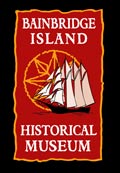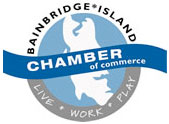
The Birth of an Island
Bainbridge Island was formed during the last ice age 13,000 to 15,000 years ago,
when the 3,000-
The First People
For approximately ten thousand years, Bainbridge Island was part of the territory of the Suquamish people. The tribe lived, traveled and gathered foods, ceremonial and spiritual items and, hunted and fished over a large area of Puget Sound, from the northern tip of Vashon Island to the Fraser River in Canada, the streams draining into western Puget Sound and the Hood Canal. Most of Kitsap County, and portions of Mason and Jefferson Counties were part of their territory.
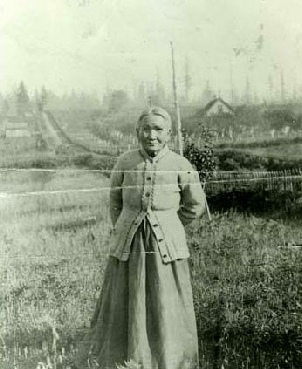
Bainbridge Island was one of many places where the Suquamish people spent the good weather months of spring and summer gathering plants, fruits and shellfish, and hunting and fishing. Food would be dried or smoked for storage into the fall and winter.
During the cold, wet weather the people lived in longhouses made of cedar planks,
in villages usually located near sources of winter food supplies, like salmon streams
and shellfish beaches. On the island, Point White, Lynwood Center, Eagle Harbor,
Port Madison and Battle Point were all winter village sites. Large family groups
lived in each longhouse, where basket-
Their respect for the life-
The First Europeans
In 1792, Captain George Vancouver was exploring the area on behalf of King George of England, and anchored off the island to make repairs to his ship. He met a group of Suquamish people, and their leader, Chief Kitsap, at their summer camp at what is now Restoration Point on the southeast tip of the island. This was the first recorded meeting between Europeans and the native people.
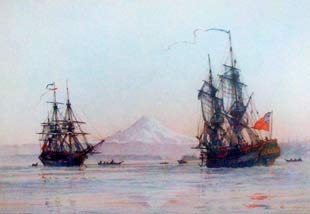 In 1841, Captain Charles Wilkes came on a surveying expedition for the United States
government and was the first European to find Agate Passage and realize that Bainbridge
was an island, which he then named for Commodore William Bainbridge, the commander
of the frigate Constitution during the War of 1812. (Interestingly, 157 years later
in 1998, island resident and professional videographer Terry Moyemont would film
and produce a documentary about the history of the Constitution on her 200th anniversary
for PBS.)
In 1841, Captain Charles Wilkes came on a surveying expedition for the United States
government and was the first European to find Agate Passage and realize that Bainbridge
was an island, which he then named for Commodore William Bainbridge, the commander
of the frigate Constitution during the War of 1812. (Interestingly, 157 years later
in 1998, island resident and professional videographer Terry Moyemont would film
and produce a documentary about the history of the Constitution on her 200th anniversary
for PBS.)
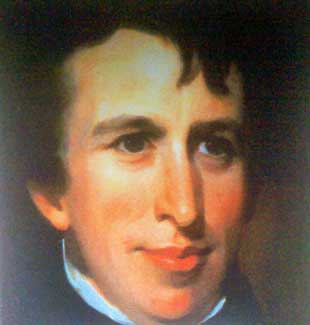 Wilkes also named several other geographical locations, including Port Madison, for
the U.S. President, Agate Passage, for an expedition artist, as well as Bill Point,
Wing Point and Eagle Harbor (for a lieutenant, not the bird, although even today
several eagles live and fish in Eagle Harbor).
Wilkes also named several other geographical locations, including Port Madison, for
the U.S. President, Agate Passage, for an expedition artist, as well as Bill Point,
Wing Point and Eagle Harbor (for a lieutenant, not the bird, although even today
several eagles live and fish in Eagle Harbor).
Early contact between European-
The name of this point of land, on the west side of the island, commemorates a battle between the Suquamish and a raiding party of Haida from what is now Canada, who had come to capture slaves. A white trader living at Agate Point helped change the course of history. He knew that the Suquamish were at their a summer camp at what is now Battle Point, and, when he saw the Haida canoes approaching, shot off his cannon as a warning. The Suquamish were able to surprise their attackers and fend them off.
On the other hand, it was clear to the native people and their leaders that their way of life was changing fast, and they were no match for the newcomers who were taking over their lands. Chief Sealth (Seattle) saw the hopelessness of trying to stop the newcomers by force, and signed the Treaty of Point Elliott in 1855. His speech, now known around the world, is full of his concern for his culture's continuance and for the intelligent stewardship of the natural environment.
His concerns were well-
The Boom Towns
Port Madison became the site of the first sawmill on Bainbridge Island and the first capital of Kitsap County. A New England geography textbook published in 1850 described Seattle as a "flourishing milltown across Puget Sound from Port Madison."
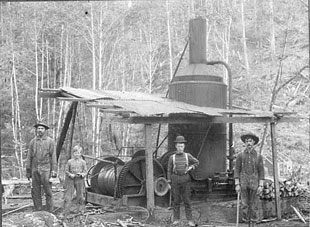
In 1864, Captain William Renton founded his sawmill at Port Blakely mill, which by
the 1880s had become the largest sawmill in the world. Both Port Blakely and Port
Madison were bustling urban centers, with shipyards and other industries, shops,
schools and hotels. Hall Brothers Shipyard, later moved to Eagle Harbor, built 88
four-

The economic depression of 1893 contributed to the close of the Port Madison mill, but the Port Blakely mill continued until fires and a decline in the timber trade forced its closure in 1924.
The Immigrants
The first Japanese immigrants came in 1883 to work at Port Blakely, along with men from many other countries. They were part of the second wave of Asian immigrants to the Seattle area, the first being Chinese who had come several decades earlier. Japanese, Hawaiian and Filipino communities were located within walking distance from the Port Blakely mill. New Sweden, a Scandinavian settlement, was also nearby.
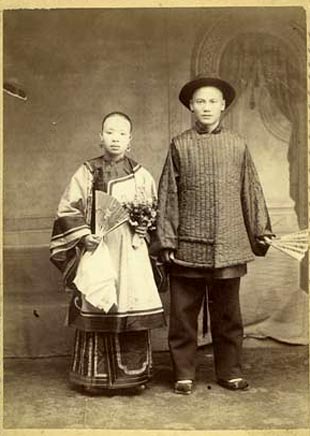
The early Japanese immigrants, like those from China and the Philippines, came to America with the hope of making their fortune and going back to the home country. The Japanese men were mostly bachelors and called wataridori or "bird of passage", as they expected to return to Japan. But many stayed on. Eventually immigration laws were loosened so that they could bring their wives or new brides over to join them. Many Filipino men found an affinity with the Native American culture and married women from local tribes.
Many of the immigrants eventually went into business for themselves as farmers and fishermen. Bainbridge Island had the perfect climate for growing strawberries and other berry crops, and many of the strawberry farms were owned by Japanese and Filipino families.
The Neighborhoods
The dense undergrowth of the Pacific Northwest forest was so formidable that the new settlers, like the native people before them, chose to settle on the shores of bays and rivers and to travel mostly by water. A group of steamships, called the Mosquito Fleet, traveled between 30 small ports and landings all over the Sound and inlets.

Each captain had a signature whistle pattern, so the residents knew which boat was
coming in. Most of those island neighborhoods are still on the map today: Port Madison,
Manzanita, Manitou Beach, Winslow, Port Blakely, Pleasant Beach, Crystal Springs,
Fletcher Bay. There were very few inland roads.
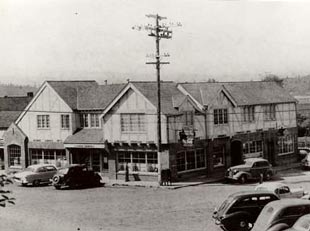
By the 1920s the neighborhood schools had consolidated into one school system. Silent movies and touring theatrical companies played at theaters in Fort Ward, Port Blakely, Manitou Park and Winslow. The first "talkie" theater was built at Lynwood Center and is still in use today. There was a thriving dance hall at Fletcher Bay, which, thanks to Mosquito Fleet transportation, drew patrons from all over the island and Kitsap County.
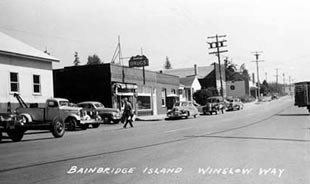
The period between the wars saw an increase in Seattlites building summer homes on the shores of the island, but the main population was employed with fishing, agriculture and support services.
World War II
The military had a presence on the island, too. In the 1900s, the US Army built Fort Ward on Rich Passage along the southern shore of the island to provide defenses for the Puget Sound Naval Shipyard at Bremerton. Some of the concrete gun emplacements can still be see along the hiking trail today.
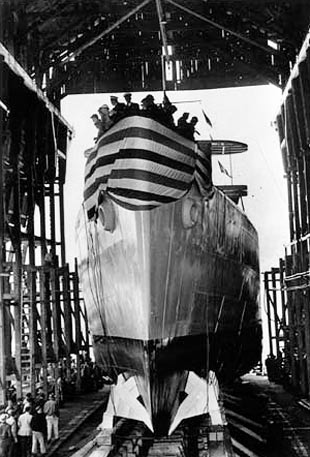
With the threat of a second World War in 1938, the Navy took over Fort Ward and enlarged
it. Antenna fields and a top-
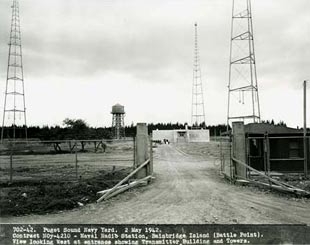
The most devastating affect of World War II on Bainbridge Island was the forced internment
of all of its residents who were of Japanese ancestry. 220 people were evacuated
and imprisoned in camps at Manzanar on the edge of the Mohave Desert in California,
or to Minidoka in Idaho, along with over 120,000 other Japanese-
Many islanders opposed the government's action, led by Walt and Milly Woodward, owners
and editors of the local paper, the Bainbridge Review. Their imprisoned fellow islanders
were American citizens, and it was clear that the government was not treating German-
The Woodwards kept the issue and the indignation before the public to support their
Japanese-
Several young men from Bainbridge served in the famous Japanese-
Neighbors watched their homes and even ran their farms in their absence, so the end
result was that Bainbridge's Japanese-
Recently island author David Guterson chronicled the story of the internment experience
of Japanese-
Post War
After the war, the Agate Passage bridge and the main highway were built, joining the island to the rest of Kitsap County. Winslow incorporated as a city in 1957. The Washington State Ferry system took over the old Hall Brothers shipyard for a repair yard.
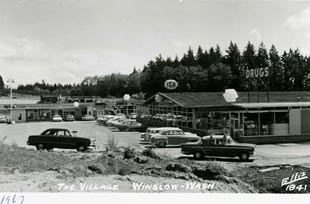 By the 1960s many of the summer houses had turned into year-
By the 1960s many of the summer houses had turned into year-
By 1990, however, the same issues were arising, and this time incorporation passed by a small margin. The City of Winslow annexed the rest of the island, and a year later the city's name was officially changed to Bainbridge Island.
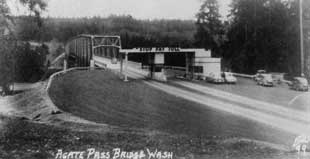
Sources
Bainbridge Island, Washington
by Northwest Waterfront
History of Bainbridge Island
by Ragnar Liljequist, Windermere Real Estate / Bainbridge Island
Port Blakely: the Community Captain Renton Built
by Andrew Price, Jr., 1989, Port Blakely Books
1998 Bainbridge Island Almanac
The Bainbridge Review
Bainbridge Island Cultural Plan
Bainbridge Island Arts & Humanities Council

Bainbridge Island
Historical Museum
215 Erickson Ave NE
www.bainbridgehistory.org
206-
